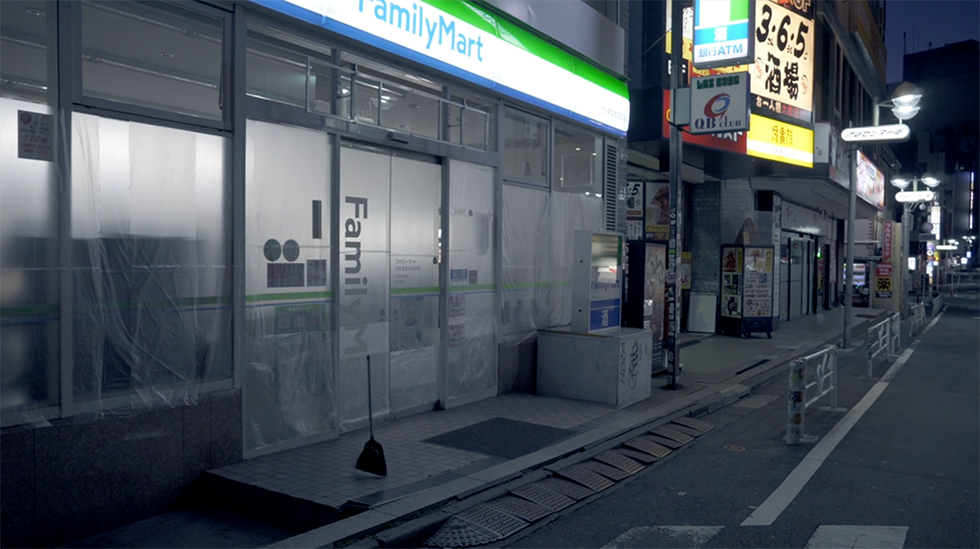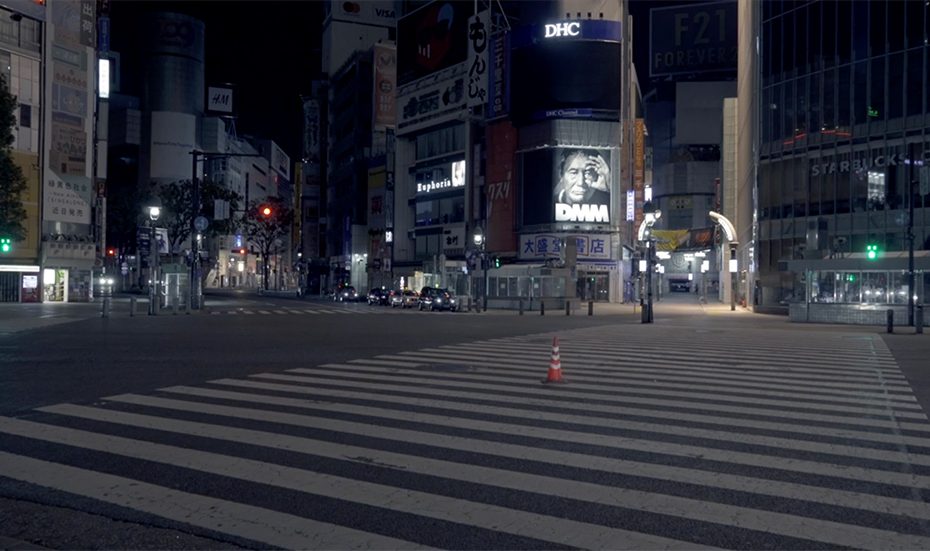”empty spring 2020”
Video 5min27sec
This video was shot in the early stages of the COVID situation, around April 2020, and documents poltergeist phenomena occurring in an empty city due to requests for restraint in the wake of the Corona disaster. For example, a red colored cone crosses Shibuya Crossing by itself, a vending machine spits out Coke when no one is around, and a broomstick sweeps the entrance of a convenience store by itself. These paranormal phenomena are full of surprises, but what is most surprising is the fact that not a single human being is walking in the usually noisy 24-hour Shibuya district, day or night. The Tokyo Metropolitan Government has called on citizens to “refrain from moving,” but has not ordered a total lockdown. But the citizens emptied the city of their own will. One night we went out on the street and found only a few homeless people and skaters. However, live cameras broadcasting Shibuya’s streets were constantly monitored by thousands of people observing the city’s state.

In 2001, the photographer Masataka Nakano captured moments of empty streets in Tokyo and released a photo book called “Tokyo Nobody.” It took Nakano 11 years to publish this photo book, and at the time, it sparked a significant buzz. While recording moments of empty streets may not have been a difficult task in European cities where shops close early at night, it presented a unique challenge in 1990s Japan. During that era, Japan embraced the theme of “Can you work 24 hours?” and created a sleepless city, Tokyo. (I’m sure people’s answer back then was “Of course we can work!”) The transition to 24-hour operations by convenience stores like Seven-Eleven (which originally opened at 7 AM and closed at 11 PM) happened in the 1990s. Nakano’s photographic works shook people’s common perception by presenting the unrealistic situation of a “city without people” in response to such social circumstances in Japan. However, approximately 20 years later, that became a reality in the urban landscape.
Throughout history, there have been several extraordinary events that changed the landscape of Tokyo. the most impactful event for our generation was the Great East Japan Earthquake in 2011. A massive earthquake occurred, causing public transportation to come to a halt and power outages to happen. Tokyo was engulfed in darkness, and the city was filled with stranded individuals. People spent hours walking back home. This event left a profound trauma in the collective memory of Tokyo.

The time when “empty spring” was created coincided with intense discussions surrounding fake news and conspiracy theories, and it was also the period when deepfake technology began to be a cause for concern. In 1874, Édouard Buguet, who ran a photography studio in France, published spirit photographs that became significant news. However, Buguet’s photographs were revealed to be fabrications created through double exposure, and Buguet was taken to court and fined 500 francs. Despite the identification of Buguet’s photographs as fake, there were still people who continued to believe they were genuine. This incident sparked discussions about the psychological condition of justifying scientifically impossible events through conspiracy theories, known as the true believer syndrome.While it is unlikely that anyone would consider the paranormal phenomena depicted in “empty spring” as real, looking back, the concept of “an empty Shibuya” could appear as a fabricated visual.
